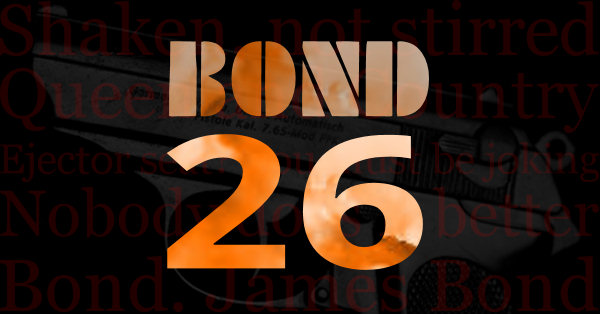When Dr No made its début at the London Pavilion on 5 October 1962, few people could have predicted that half a century later the James Bond films would still be going strong.
This year marks the 50th anniversary of cinematic James Bond and as well as a new film, the 23rd in the series, there are expected to be a number of events to celebrate that landmark. If there is one thing the world has come to accept, it is that James Bond will always return—mostly with an explosion or two, a gun in one hand, a vodka martini in the other and a girl in his bed.
In this article we take a look at each of the James Bond movies and what made each one of them special.
Dr No
 In 1962, the world woke up to the premiere of the very first Bond Movie, Dr No. Starring Sean Connery, the movie plot revolved around James Bond assignment to track down a Chinese technological scientist who worked for the evil agency SPECTRE. Alongside the movie’s popularity, Dr No was monumental because of its contributions to the Bond legend. It featured the memorable entrance scene with Ursula Andress and launched what would be the signature quote in almost every movie; “Bond. James Bond”.
In 1962, the world woke up to the premiere of the very first Bond Movie, Dr No. Starring Sean Connery, the movie plot revolved around James Bond assignment to track down a Chinese technological scientist who worked for the evil agency SPECTRE. Alongside the movie’s popularity, Dr No was monumental because of its contributions to the Bond legend. It featured the memorable entrance scene with Ursula Andress and launched what would be the signature quote in almost every movie; “Bond. James Bond”.
From Russia With Love
In 1963, director Terrence Young returned with the second Bond movie, From Russia With Love. Like the name suggests, the movie involved a female Russian agent (unknowingly working for SPECTRE) acting as a honeypot to trap James Bond. Again with Sean Connery in the lead, millions of viewers loved From Russia With Love with many people praising the movies elevation in violence.
Goldfinger
After two successful outings as the director of the Bond, Terrence Howard made way for Guy Hamilton in the 1964 bond movie, Goldfinger. The movie was built around the more ambitious script involving the eponymous villain Auric Goldfinger who is trying to increase the value of his gold supply by destroying Fort Knox. Goldfinger is agreed by many to be one of the finest bond movies of all time. It featured a laser torture scene where the memorable lines bond asks “Do you expect me to talk?” to which Auric Gold finger replies ‘No, Mr. Bond, I expect you to die!” Goldfinger was a huge hit and became the standard on which future bond movies were built.
Thunderball
Before the release of the move, the script had already gained a lot of popularity because of the success of the novel. With Terrence Young once again behind the cameras, Thunderball was released to amazing box office acclaim. In the movie, Bond once again tackles SPECTRE by preventing the plans of billionaire playboy, Emilio Largo from using nuclear weapons in attacking the US. The movie is considered to be the most successful bond movie of all time earning close to a billion dollars (when adjustments for inflation are made).
You Only Live Twice
You Only Live Twice was a memorable movie for many reasons. For one, it featured the first recorded meeting between Bond and his arch-nemesis, Blofeld. The movie was also notable because of its depiction of Japanese culture and the use of martial arts. Shot in Japan, the title of the movie and novel was derived from a haiku penned by Fleming. However, unlike previous Bond movies, the producers worked with a script that was radically different from the tone of the novel aside from its location and prominent characters. The movie was directed by Lewis Gilbert and featured a storyline where Bond is required to adopt the cover of being married to Kissy Suzuki during his investigation.
On Her Majesty’s Secret Service
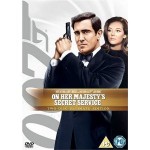 Following Sean Connery’s announced retirement from the Bond franchise, the task of filling the shoes of 007 fell to George Lazenby in the 6th movie, On Her Majesty’s Secret Service. Directed by Peter R. Hunt, The movie’s traditional romantic overtone went a step further to include a marriage between Bond and Crime lord’s daughter. However, despite the critical acclaim of the movie, many of the fans were unappreciative of Lazenby’s contribution preferring the familiarity of Sean Connery. The relative poor performance of the movie as well as George Lazenby’s hesitation to star in a sequel led to the return of Connery in the next movie.
Following Sean Connery’s announced retirement from the Bond franchise, the task of filling the shoes of 007 fell to George Lazenby in the 6th movie, On Her Majesty’s Secret Service. Directed by Peter R. Hunt, The movie’s traditional romantic overtone went a step further to include a marriage between Bond and Crime lord’s daughter. However, despite the critical acclaim of the movie, many of the fans were unappreciative of Lazenby’s contribution preferring the familiarity of Sean Connery. The relative poor performance of the movie as well as George Lazenby’s hesitation to star in a sequel led to the return of Connery in the next movie.
Diamonds Are Forever
In the 1971 movie Diamonds Are Forever, James Bond follows a diamond smuggling operation that leads him to a plan by SPECTRE to destroy land based weapons with the use of satellite manned lasers. Directed by Guy Hamilton, Sean Connery was reportedly paid a million dollars to return for what the producers believed would be his final outing as Bond.
Live and Let Die
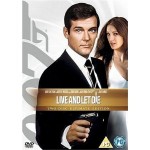 The idea of Bond going after heroin dealers and fighting voodoo priests might not have been an appealing idea during the early sixties, but in the mid 70s, at the height of the blaxploitation era, it proved to be a winning formula successfully launching Roger Moore’s first outing as bond. The 1973 movie, Live and Let Die would go on to become a box office success earning over 800 million dollars (after being adjusted for inflation).
The idea of Bond going after heroin dealers and fighting voodoo priests might not have been an appealing idea during the early sixties, but in the mid 70s, at the height of the blaxploitation era, it proved to be a winning formula successfully launching Roger Moore’s first outing as bond. The 1973 movie, Live and Let Die would go on to become a box office success earning over 800 million dollars (after being adjusted for inflation).
The Man with the Golden Gun
Following closely on the success of Live and Let Die, Roger Moore and Guy Hamilton teamed up once again barely 12 months after for the 9th Bond movie; title the man with the Golden Gun. Where the former movie had borrowed from the blaxploitation theme, The Man with the Golden Gun had a larger emphasis on martial arts and Kung Fu as was also prevalent at the time.
The Spy Who Loved Me
Directed by Lewis Gilbert, The Spy Who Loved Me, revolved around a female Russian agent who was working alongside Bond in searching for two missing nuclear subs. Released in 1977, the movie was a box office hit cementing Roger Moore wide spread acceptance as a charismatic and witty Bond.
Moonraker
Moonraker was the 11th Bond movie and was released in 1979. Keeping in line with the desire of the producers to make the Bond movies on par with advances in technology, the movie’s plot featured Bond investigating the hijacking of a Moonraker space shuttle. Like prior instalments, the movie was a box office success.
For Your Eyes Only
Directed by John Glen, the movie plot of For Your Eyes Only involved an investigation by Bond into the murder of a marine archeologist. His investigations reveal the presence of an attack computer on a sunken ship which in turn inevitably ends with a battle for its ownership with the soviets who are identified as wanting the same thing.
Octopussy
The plot of Octopussy (1983) involved an investigation into the murder of a fellow 00 agent, Agent 009. The course of the investigation leads Bond to form an alliance with Octopussy who works with him and disrupting a plan by the soviet backed Afghan Prince, Kamal Khan, to detonate a nuke within a US air base located in Germany.
A View To A kill
When Max Zorin, a former German industrialist decides to increase the worth of his microchip company by creating an artificial earthquake that will destroy his other competitors and the rest of Silicon Valley, it is up to a Bond to stop him. A View To A Kill (1985) was Roger Moore’s final outing as Bond. Visibly aged and in his fifties, many of the stunts within the movie had to be done by body doubles.
The Living Daylights
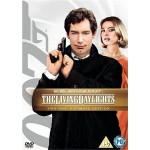 Two years after Roger Moore’s retirement, Timothy Dalton was picked to fill the challenging shoes of Bond. Bringing his skills as a stage actor to the role, Timothy Dalton is credited by many for showing the serious side of bond. In the Living Daylights Bond protects a civilian who was initially reported to have been a sniper. Her good looks might have had a part to play in it because they start up a personal relationship during their investigation into why she was asked to impersonate a false fly. Their hunt inevitably uncovers a drug smuggling operation run by Brad Whitaker, a notorious arms dealer.
Two years after Roger Moore’s retirement, Timothy Dalton was picked to fill the challenging shoes of Bond. Bringing his skills as a stage actor to the role, Timothy Dalton is credited by many for showing the serious side of bond. In the Living Daylights Bond protects a civilian who was initially reported to have been a sniper. Her good looks might have had a part to play in it because they start up a personal relationship during their investigation into why she was asked to impersonate a false fly. Their hunt inevitably uncovers a drug smuggling operation run by Brad Whitaker, a notorious arms dealer.
License To Kill
In the 1989 movie, License To Kill, James bond quits the secret service to seek out the attempted murderer of his friend, CIA agent Felix Leiter. His hunt leads him to Columbia and the powerful drug lord, Franz Sanchez. License to kill was Timothy Dalton’s last movie as bond.
Goldeneye
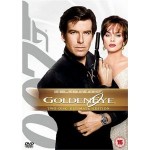 A period of 6 years went by before Bond was once again returned to the big screen. With big budget action flicks on the rise, the producers recognized the fact that something big would need to be done to reintroduce Bond into the modern world. They were successful with Goldeneye. From the crooning sounds of Tina Turner, to Pierce Brosnan’s suave performance, Goldeneye was an instant hit breaking box office records. Directed by Martin Campbell, the film involved Bond’s MI6 assigned task of preventing the Goldeneye satellite from being used to cause a global financial meltdown.
A period of 6 years went by before Bond was once again returned to the big screen. With big budget action flicks on the rise, the producers recognized the fact that something big would need to be done to reintroduce Bond into the modern world. They were successful with Goldeneye. From the crooning sounds of Tina Turner, to Pierce Brosnan’s suave performance, Goldeneye was an instant hit breaking box office records. Directed by Martin Campbell, the film involved Bond’s MI6 assigned task of preventing the Goldeneye satellite from being used to cause a global financial meltdown.
Tomorrow Never Dies
For the 18th Bond movie, James Bond turned his eyes to the world of the Media. Suspicions that Elliot Carver, a media mogul might be involved in an international incident with international waters leads Bond and his assistant to the discovery of a daring plot by Elliot to instigate a war between China and the UK in a bid to boost the success of Carver Media Group’s news channel.
The World Is Not Enough
Typically sheltered and always protected back in her office at MI6 headquarters, a kidnapped M is just one of the many surprises to be found in The World Is Not Enough. With the notorious terrorist Renard seeking revenge, it is up to Bond to protect the oil heiress Electra King as well as the image and reputation of Bond.
Die Another Day
Die Another Day was the 20th official bond movie and was thus filled with several scenes that were reflective of prior movies. For instance, the Goldfinger laser was once again used as method of torture although this time on a female American agent as well as an incredibly memorable rise from the ocean by Halle Berry. With his 00 status revoked, the movie featured an angry bond who is trying to find out who was responsible for his capture by the North Koreans.
Casino Royale
 In 2006, following years of speculation on how he would fare, Daniel Craig made his debut as the new face of Bond. He played a younger, less sophisticated but in no way softer version of the spy that everyone was familiar with. On his very first assignment as an agent with the 00 prefix, Bond attempts to disrupt the plans of a terrorist financier by playing and defeating him in a game of Texas Hold’ em Poker with really high stakes. The movie was a resounding success critically and commercially, earning Daniel Craig dozens of awards and nominations for his performance.
In 2006, following years of speculation on how he would fare, Daniel Craig made his debut as the new face of Bond. He played a younger, less sophisticated but in no way softer version of the spy that everyone was familiar with. On his very first assignment as an agent with the 00 prefix, Bond attempts to disrupt the plans of a terrorist financier by playing and defeating him in a game of Texas Hold’ em Poker with really high stakes. The movie was a resounding success critically and commercially, earning Daniel Craig dozens of awards and nominations for his performance.
Quantum of Solace
In 2008, Daniel Craig made his second foray as Bond with the movie Quantum of Solace. Written as a direct sequel to Casino Royale, the movie featured a vengeful Bond going after the organization Quantum who was responsible for the death his lover Vesper Lynd. During the process, Bond also discovers a plot by the same organization to hijack Bolivia’s fresh water supply and dutifully stops it. Riding on the achievements of Casino Royale and with Marc Foster behind the cameras, the film was a box office hit.
Skyfall
James Bond will return in Skyfall in 2012.
Buy the James Bond films from Amazon






